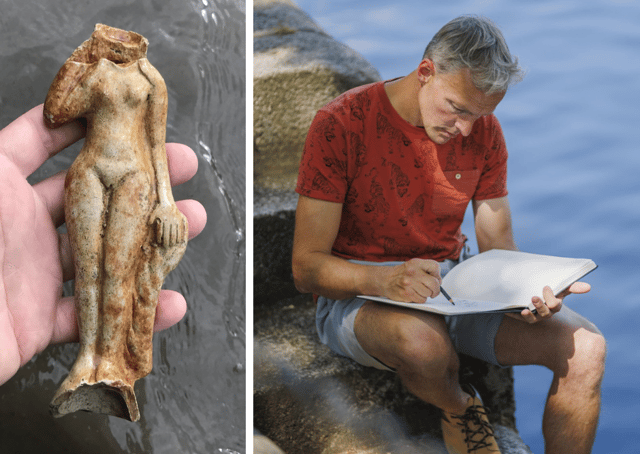Mudlarking and the treasures found on the shores of the Thames
and live on Freeview channel 276
A rosary bead found by a Thames mudlark has been listed among the most impressive archaeological finds made by the public in a report by the British Museum.
'Mudlarking' is an activity where enthusiasts search riverbeds for historical treasures - and with thousands licensed in London you are likely to have seen them down by the Thames.
Advertisement
Hide AdAdvertisement
Hide AdCaroline Nunnely, 61, from Brighton, discovered the rosary bead while scavenging for interesting objects along the river foreshore at Queenhithe, near St Paul's Cathedral and the Millennium Bridge.
A spokesperson for the museum said the “tiny, intricately carved” bone rosary bead shows the face of a young woman on one side, possibly representing the Virgin Mary, and a skull on the other.
Caroline said in an Instagram post: “It really is highly unlikely I’ll ever find anything else this significant, but like all of us who have the mudlarking obsession, I’m going to keep staring at the foreshore in the hope that I do.”
The discovery is one of 1,378 'treasure cases' found in 2022 - the highest number ever recorded - the latest British Museum Portable Antiquities Scheme (PAS) report revealed on Tuesday.
Advertisement
Hide AdAdvertisement
Hide Ad‘Treasure’ is defined as a metallic object, with at least 10% of its weight being gold or silver, that is at least 300 years old when found.
A 3,000-year-old gold dress fastener from Staffordshire and a hoard of Iron Age gold coins found in West Berkshire were among the other significant finds listed in the report.
Michael Lewis, head of PAS and Treasure at the British Museum, said: “2022 was another successful year for the Portable Antiquities Scheme with a further 53,490 archaeological items recorded onto its database, bringing the total to almost 1.7 million finds. Although finders are required to report treasure, most finds are reported on a voluntary basis, which makes this a truly remarkable contribution.”


Fellow Thames mudlark and artist Ed Bucknall, 48, found a Roman clay Venus figurine while searching along the foreshore in 2020. The artefact was subsequently recorded on the British Museum database by the Museum of London, which determined that it was produced in Gaul in the first century AD and would have been used in a household shrine.
Advertisement
Hide AdAdvertisement
Hide AdEd, who is based in Wapping and has been mudlarking along the Thames since 2011, said that fewer than 100 examples of the figurine have been recorded in London to date. He said his passion for history began at 11 years old when he found a large Roman coin under a tree that had fallen in the great storm of 1987.
“Re-finding lost historical objects and having them recorded is important as it brings London’s history back to life and adds to the database for future generations,” he said.
Mudlarking requires a permit, issued by the Port of London Authority (PLA), which dictates that valuable or historical artefacts be declared to the Museum of London.
The hobby has now become so popular that the PLA paused the approval of new licences in 2022 after permit numbers reached 5,000 “to protect the foreshore of the tidal River Thames, a delicate historical site that has come under increasing pressure from visitors”.
Comment Guidelines
National World encourages reader discussion on our stories. User feedback, insights and back-and-forth exchanges add a rich layer of context to reporting. Please review our Community Guidelines before commenting.